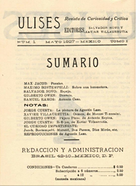Valeria Luiselli ~ Trespassers On The Rooftops: A Secret History Of Mexico City’s Cultural Revolutionaries
 Mexico City rooftops – azoteas – are usually flat. A parapet wall encloses the roof area, creating a kind of open-air patio, less visible to neighbours than the common interior patios of colonial and neocolonial buildings, and not easily accessed by visitors.
Mexico City rooftops – azoteas – are usually flat. A parapet wall encloses the roof area, creating a kind of open-air patio, less visible to neighbours than the common interior patios of colonial and neocolonial buildings, and not easily accessed by visitors.
The rapidly expanding city of the 1920s housed its working classes either in these small rooftop rooms (cuartos de azotea), or in the more well-known vecindades, Mexico’s version of tenement buildings. Brought to Mexico during the conquest in the 16th century, but transformed into the sort of living quarters we know today during the mid-19th century, the vecindades were the typical dwelling space for working-class families, and in them the urban lumpen were crammed into small rooms that surrounded a common patio. While these were occupied by members of the working classes whose jobs did not provide room and board, such as factory workers, builders, or street-vendors, the cuartos de azotea were occupied by maids and servants, usually migrants from the provinces, who worked for the family that lived downstairs.
Read more: http://www.theguardian.com/trespassers-on-the-rooftops